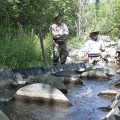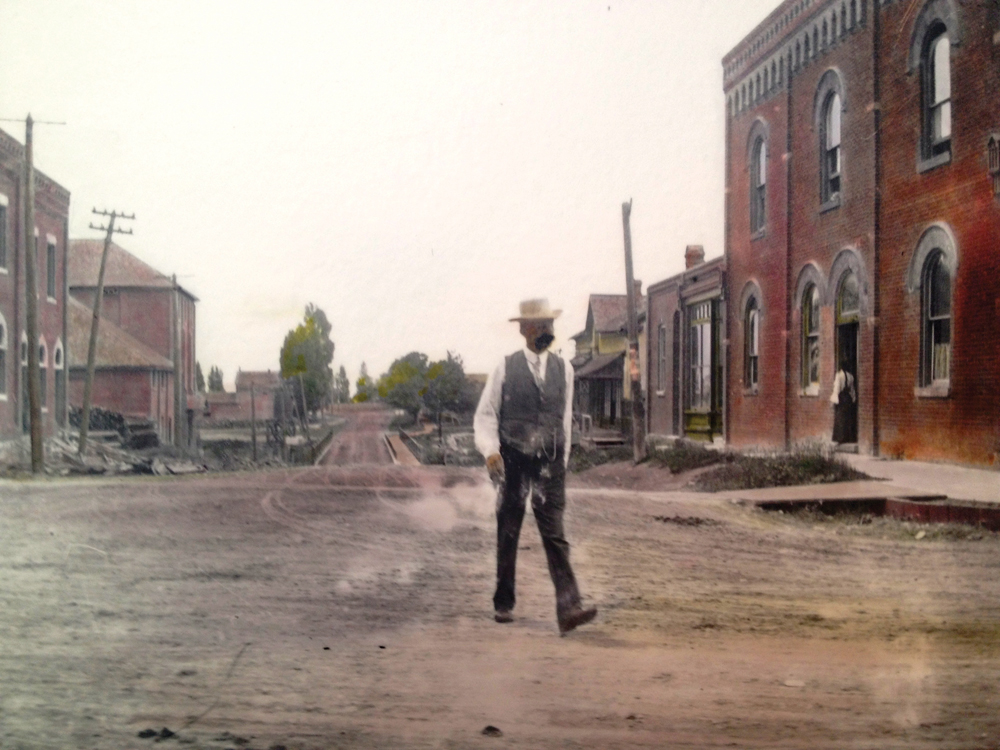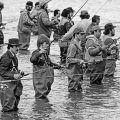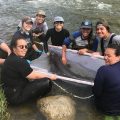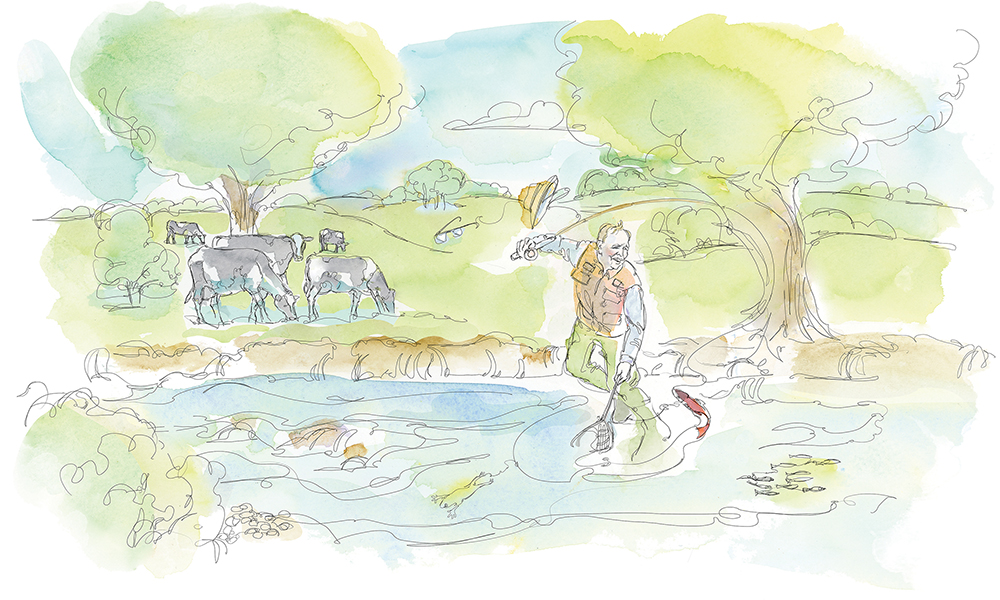Researchers and community initiatives work to improve fisheries.
by Roger Klein // Video by Roger Klein
Internationally recognized scientists with Biotactic Fisheries Research and Monitoring have returned to the Thornbury Fishway to continue studying the migrations of rainbow trout and salmon in the Beaver River. Christopher Bunt, Biotactic’s president and principal researcher, is an expert on fish passage systems.
“I can say with confidence that there is not a fishway in the world that attracts and passes fish with 100 percent efficiency like people would hope, but this particular fishway does a really good job,” says Bunt.
This is the 12th consecutive season that Bunt and his team have monitored fish migrations in Thornbury utilizing AI technology and an underwater camera mounted inside the fishway. The camera and temperature sensor are part of a larger network of underwater observatories that can be viewed by the public online.
The continuous, underwater point of view allows the researchers to count the number of fish, identify species and observe their general health. Bunt says it also helps build appreciation for the natural resource.
“Ever since we installed this system back in 2011, the public interest has just grown every single year. It’s not just anglers, it’s not just managers and it’s not just the biologists, it’s the general public. Everybody wants to see fish. This fishway in Thornbury is the number 1 tourist attraction in town.”
Biotactic’s research, published in the North American Journal of Fisheries Management, demonstrated that the fishway is highly effective once fish enter the fishway, but only about half of the migrating fish in their study actually found the fishway entrance at the foot of the dam.
It’s not just anglers, it’s not just managers and it’s not just the biologists, it’s the general public. Everybody wants to see fish. This fishway in Thornbury is the number 1 tourist attraction in town.
“Especially considering the fact that there are a large number of tributaries in Georgian bay in particular that are blocked,” says Bunt. “A large proportion of those tributaries can be undammed.”
One such tributary is the Little Beaver River which flows through Thornbury’s west end. Andy McKee, the chair of the Beaver River Watershed Initiative (BRWI), says an electro-fishing survey revealed that a concrete bridge abutment under the Georgian Trail blocks fish migrations.
“The diversity of the fish below was much greater than the diversity above,” says McKee.
Last summer, BRWI volunteers installed a special culvert to help fish get past the concrete wall. McKee says spawning fish were recently spotted upstream from the bridge for the first time in decades, “probably since the railway abutment installed in the 1870s, so that’s progress.”
For Mckee and the volunteers, the culvert is a success story that was made possible through cooperation between the Town of The Blue Mountains, service clubs and conservation groups, but there’s still more to do on the Little Beaver River.
“There’s a lot of rehabilitation stream work to do above the fish culvert, but I think this will certainly raise awareness of what can be done,” says McKee. “And as a result, maybe we will get more help in stream rehabilitation, make the stream more fish friendly and more productive.”






